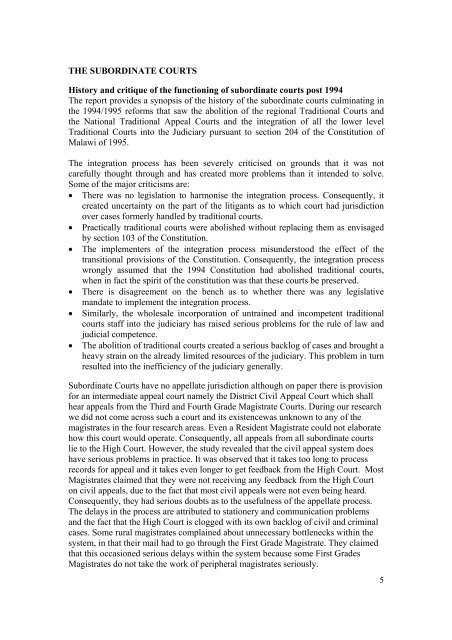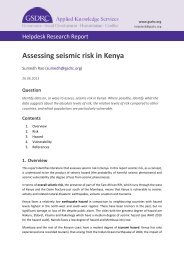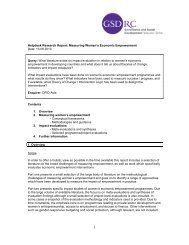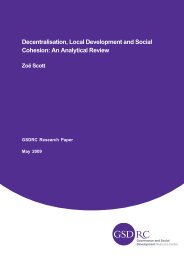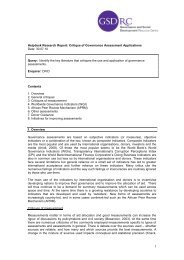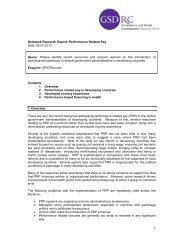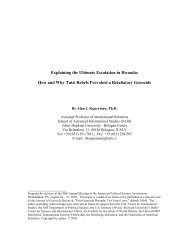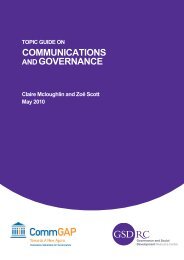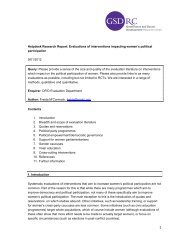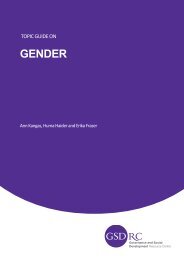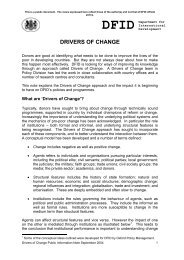ACCESS TO JUSTICE FOR THE POOR OF MALAWI? AN ... - GSDRC
ACCESS TO JUSTICE FOR THE POOR OF MALAWI? AN ... - GSDRC
ACCESS TO JUSTICE FOR THE POOR OF MALAWI? AN ... - GSDRC
- No tags were found...
You also want an ePaper? Increase the reach of your titles
YUMPU automatically turns print PDFs into web optimized ePapers that Google loves.
<strong>THE</strong> SUBORDINATE COURTSHistory and critique of the functioning of subordinate courts post 1994The report provides a synopsis of the history of the subordinate courts culminating inthe 1994/1995 reforms that saw the abolition of the regional Traditional Courts andthe National Traditional Appeal Courts and the integration of all the lower levelTraditional Courts into the Judiciary pursuant to section 204 of the Constitution ofMalawi of 1995.The integration process has been severely criticised on grounds that it was notcarefully thought through and has created more problems than it intended to solve.Some of the major criticisms are:• There was no legislation to harmonise the integration process. Consequently, itcreated uncertainty on the part of the litigants as to which court had jurisdictionover cases formerly handled by traditional courts.• Practically traditional courts were abolished without replacing them as envisagedby section 103 of the Constitution.• The implementers of the integration process misunderstood the effect of thetransitional provisions of the Constitution. Consequently, the integration processwrongly assumed that the 1994 Constitution had abolished traditional courts,when in fact the spirit of the constitution was that these courts be preserved.• There is disagreement on the bench as to whether there was any legislativemandate to implement the integration process.• Similarly, the wholesale incorporation of untrained and incompetent traditionalcourts staff into the judiciary has raised serious problems for the rule of law andjudicial competence.• The abolition of traditional courts created a serious backlog of cases and brought aheavy strain on the already limited resources of the judiciary. This problem in turnresulted into the inefficiency of the judiciary generally.Subordinate Courts have no appellate jurisdiction although on paper there is provisionfor an intermediate appeal court namely the District Civil Appeal Court which shallhear appeals from the Third and Fourth Grade Magistrate Courts. During our researchwe did not come across such a court and its existencewas unknown to any of themagistrates in the four research areas. Even a Resident Magistrate could not elaboratehow this court would operate. Consequently, all appeals from all subordinate courtslie to the High Court. However, the study revealed that the civil appeal system doeshave serious problems in practice. It was observed that it takes too long to processrecords for appeal and it takes even longer to get feedback from the High Court. MostMagistrates claimed that they were not receiving any feedback from the High Courton civil appeals, due to the fact that most civil appeals were not even being heard.Consequently, they had serious doubts as to the usefulness of the appellate process.The delays in the process are attributed to stationery and communication problemsand the fact that the High Court is clogged with its own backlog of civil and criminalcases. Some rural magistrates complained about unnecessary bottlenecks within thesystem, in that their mail had to go through the First Grade Magistrate. They claimedthat this occasioned serious delays within the system because some First GradesMagistrates do not take the work of peripheral magistrates seriously.5


